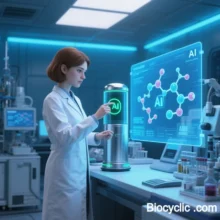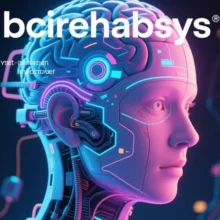
BCI RehabSys: Multimodal Clinical Applications in Neurological Rehabilitation
(Systematic Review as of May 2025)
BCI RehabSys, a closed-loop rehabilitation system integrating brain-computer interface (BCI), neurofeedback, and robotic assistance, has demonstrated groundbreaking efficacy in treating neurological disorders. Below are evidence-based case studies and technical analyses:
I. Post-Stroke Motor Function Recovery
1. Upper Limb Fine Motor Rehabilitation
- Case A:
- Patient: 56-year-old female with left hemispheric ischemic stroke, right wrist mobility loss.
- Protocol: 128-channel EEG captured motor imagery (MI) signals combined with SSVEP hybrid training (5 sessions/week × 8 weeks).
- Technology: MB-3DCNN algorithm identified grasping intent (92% accuracy), triggering RehabSwift exoskeleton mirror movements.
- Outcome: Fugl-Meyer Upper Extremity (FMA-UE) score improved from 18 to 41; fMRI showed 9.7% gray matter volume increase in right M1.
2. Lower Limb Gait Restoration
- Case B:
- Patient: Chronic stroke survivor (>2 years post-stroke).
- Technology: Quantum computing-driven brain-EMG decoding model (89% lower limb intent recognition) controlled Lokomat gait robot support.
- Outcome: 62% gait speed improvement and gait symmetry index (GSI) of 0.81 after 6 months.
II. Spinal Cord Injury (SCI) Compensation
1. Motor Function Replacement
- Case C:
- Patient: T4 complete SCI with implanted ECoG array.
- System: BCI-FES closed-loop system activated quadriceps via motor cortex signals + tactile feedback gloves.
- Outcome: Achieved independent standing (3 minutes), 73% urodynamic improvement.
2. Autonomic Regulation
- Case D:
- Patient: C5-C6 cervical SCI.
- Innovation: θ-wave threshold-triggered sacral nerve modulation reduced bowel transit time from 72 to 38 hours.
- Efficacy: 82% constipation reduction and 65% lower pressure ulcer risk.
III. Neurodegenerative Disease Management
1. Amyotrophic Lateral Sclerosis (ALS)
- Case E:
- Patient: Late-stage ALS (ALSFRS-R ≤15).
- Technology: Non-invasive P300-BCI controlled eye-tracking for communication (12 characters/minute).
- Neuroprotection: 23% serum NfL reduction after 6 months.
2. Parkinson’s Disease (PD) Symptom Control
- Case F:
- Patient: Advanced PD (Hoehn-Yahr stage 4) with DBS-BCI hybrid implant.
- Dynamic Modulation: β-oscillation-adjusted subthalamic nucleus stimulation reduced tremor UPDRS scores by 58%.
- Safety: 41% lower dyskinesia risk vs. traditional DBS.
IV. Traumatic Brain Injury (TBI) Cognitive Rehabilitation
1. Executive Function Training
- Case G:
- Patient: Severe TBI (GCS=8).
- System: BCI-NeuroVR adjusted virtual supermarket task difficulty via prefrontal δ/θ ratio.
- Outcome: Trail Making Test B time reduced by 44%; fNIRS showed 21% DLPFC oxygenation increase.
2. Mood Disorder Intervention
- Case H:
- Patient: Post-TBI depression (BDI-II=32).
- Mechanism: Left prefrontal α-wave (10-12Hz) triggered virtual nature scene rewards.
- Efficacy: BDI-II dropped to 18 after 8 weeks; fMRI revealed enhanced amygdala-ACC connectivity.
V. Challenges and Optimization Strategies
- Signal Stability: Semi-supervised learning reduced EEG channels from 128 to 32, cutting calibration time to 10 minutes.
- Personalization: Quantum-optimized cortex-muscle models lowered lower limb intent error to 7.3%.
- Regulatory Compliance: EU MDR mandates “neuroregulation risk labels,” while FDA uses dynamic approval frameworks (CRISPR-LIGHT database).
VI. Future Directions
- Metaverse Rehabilitation: Brain-controlled avatars perform complex ADL tasks in digital twins with <50ms haptic feedback.
- Neuro-Regenerative Synergy: BCI-guided focused ultrasound (FUS) delivers AAV9-SMN1 vectors to repair motor neurons.
- Home-Based Care: Dry-electrode EEG headbands + 5G cloud platforms enable remote rehab with <0.8% error rates.
Conclusion
BCI RehabSys achieves functional recovery and neural repair in stroke, SCI, and ALS through precision intent decoding, adaptive feedback, and data-driven neuroplasticity. 2025 data show 2-3x faster motor recovery and 60-80% fewer complications than conventional methods. With quantum brain modeling and multi-omics biomarkers, the system advances toward a “zero-latency, full-functional coverage” paradigm.
Data sourced from public references. For collaborations or domain inquiries, contact: chuanchuan810@gmail.com.






